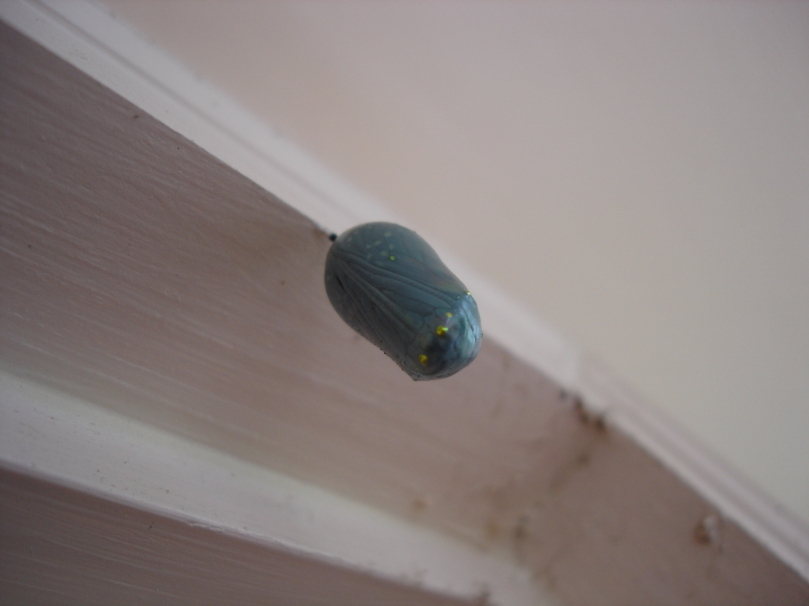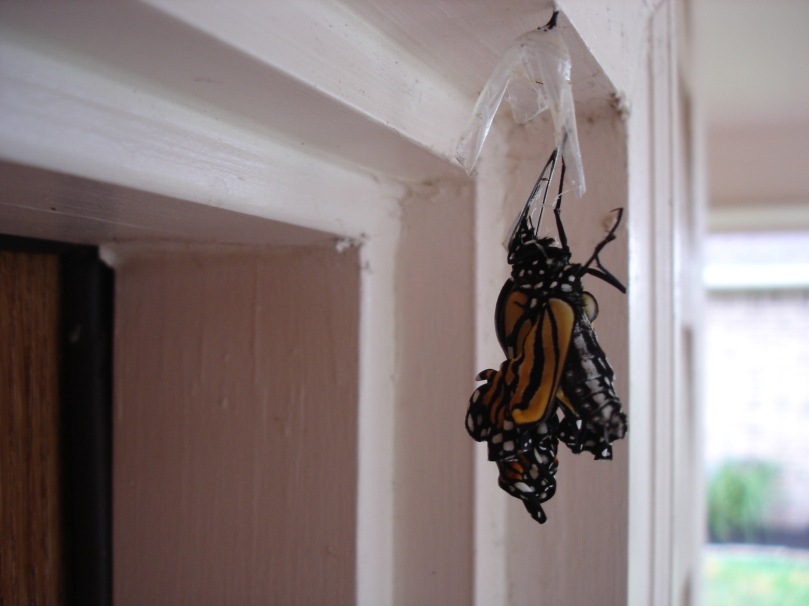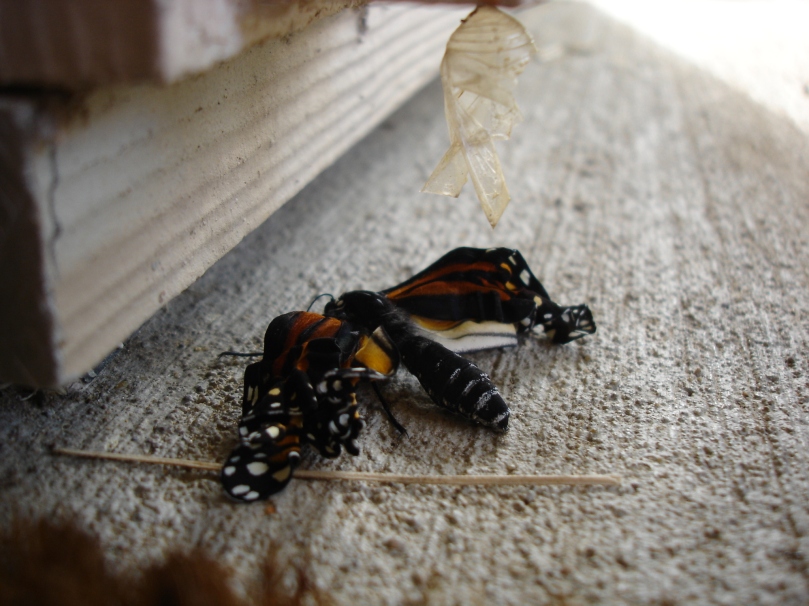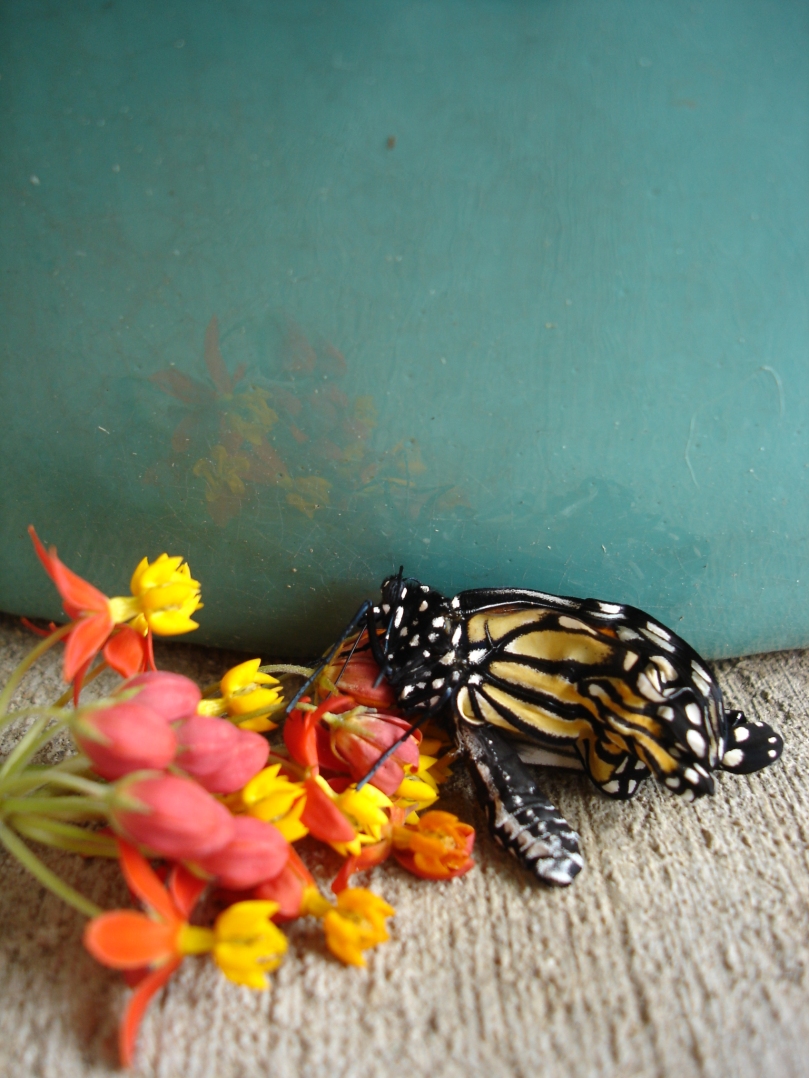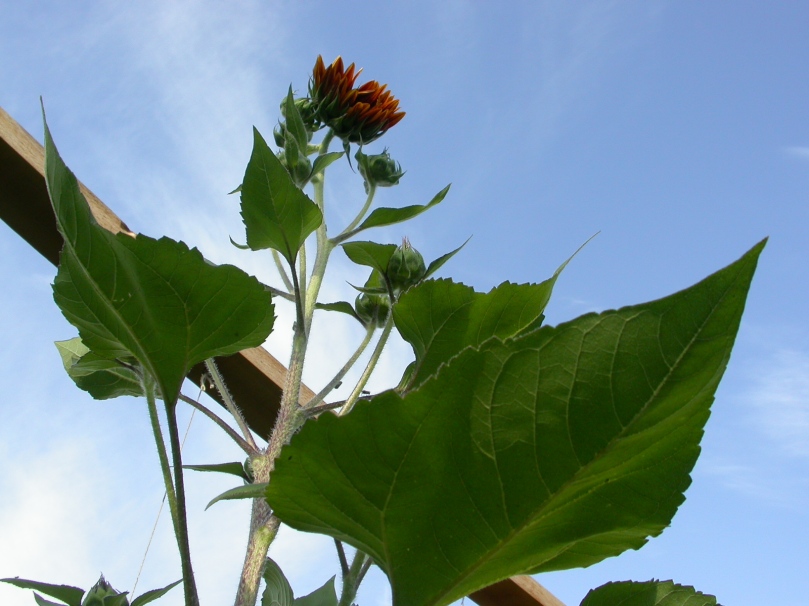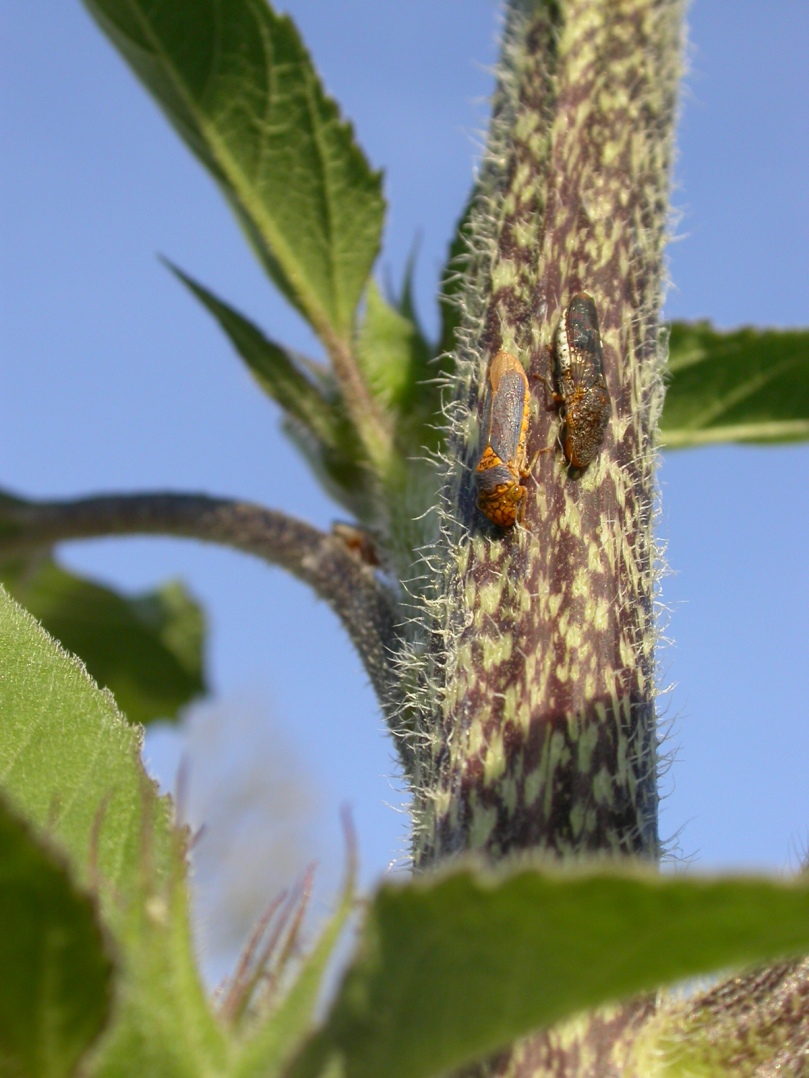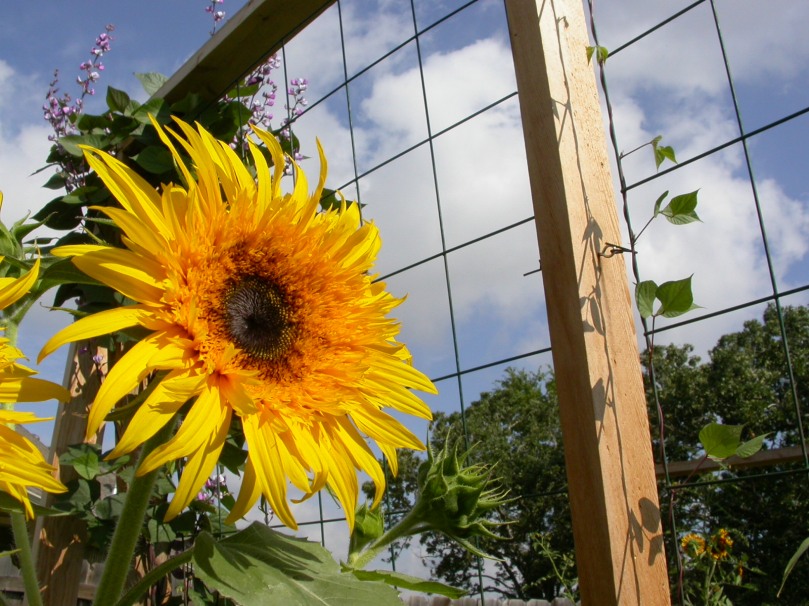if it weren’t for my insistent friend ms. slotharium, i’d probably never get this post up. i know, i’ve been a really bad garden blogger lately, but i just haven’t been able to spend (i.e. distract myself) for a minute longer at the computer as this is the time of year to be outside in texas! surely you understand, so i won’t waste anymore time giving excuses. besides, it’s the bloom day before the garden bloggers meetup in asheville, so i really need to post something or else the powers that be might not let me participate.
here’s the prettiest blooming thing in the garden, bespeckled with the day’s constant drizzle. it sure makes me smile.
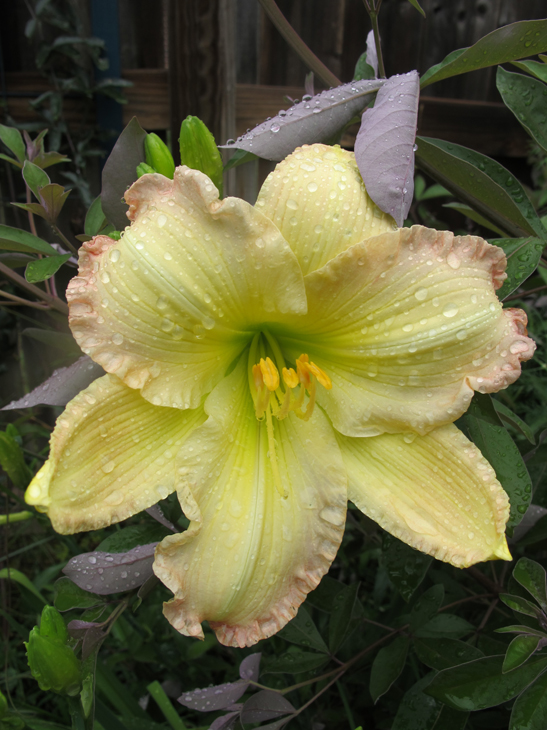
no time to post photos of each individual blooming plant right now, so here’s the larger view what the front yarden is looking like. a little wild, yes, but over the past couple of months it’s been host to dozens of metamorphosing butterflies, color shifting anoles and even a few molting snakes seeking refuge.


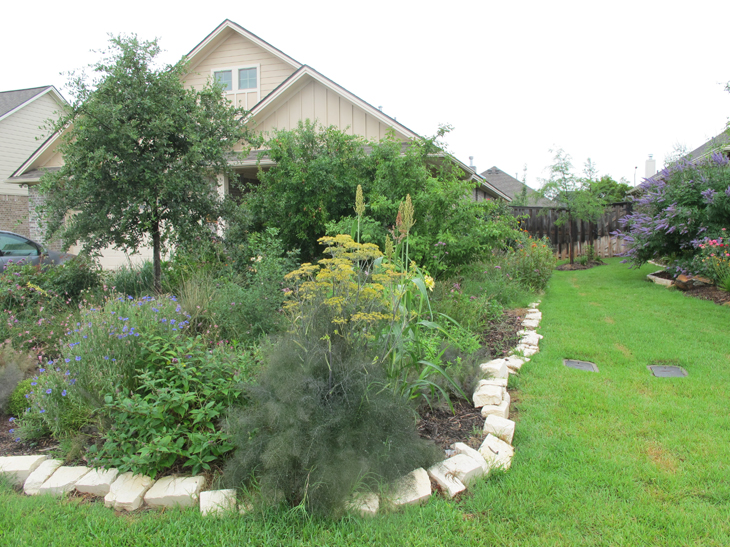

moving along towards the back yarden, here’s a little project mr. grwhryrpltd put together to support our enthusiastic grapevine.

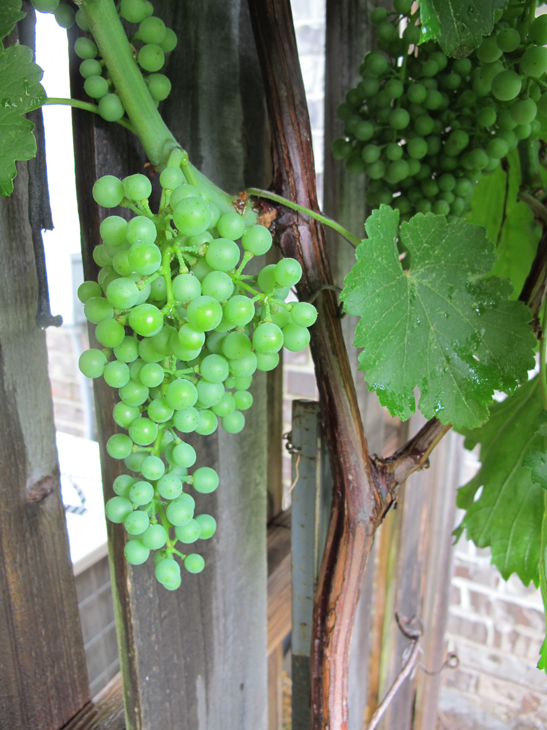
speaking of bounty, we’ve been harvesting plums the past few mornings from the front garden. they’re so tasty. i’m going to attempt to make plum jam this evening.
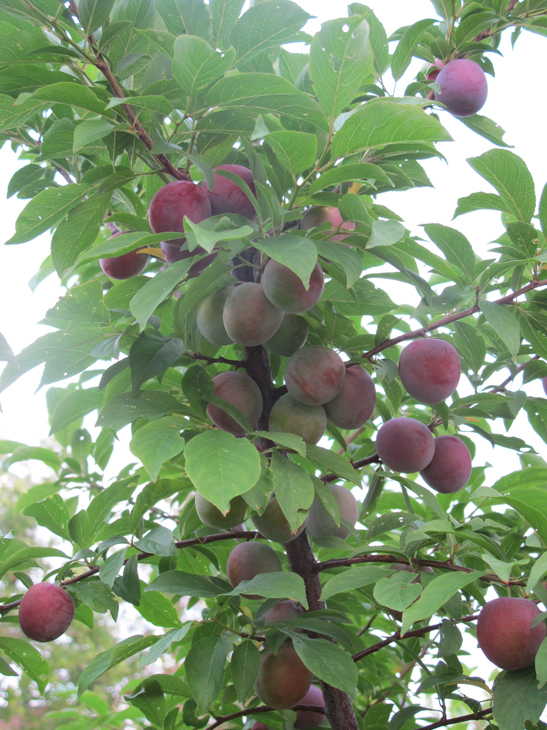

oh right… we were heading to the back garden. here’s what it looks like with somewhat frequent rains (every 10 days or so).
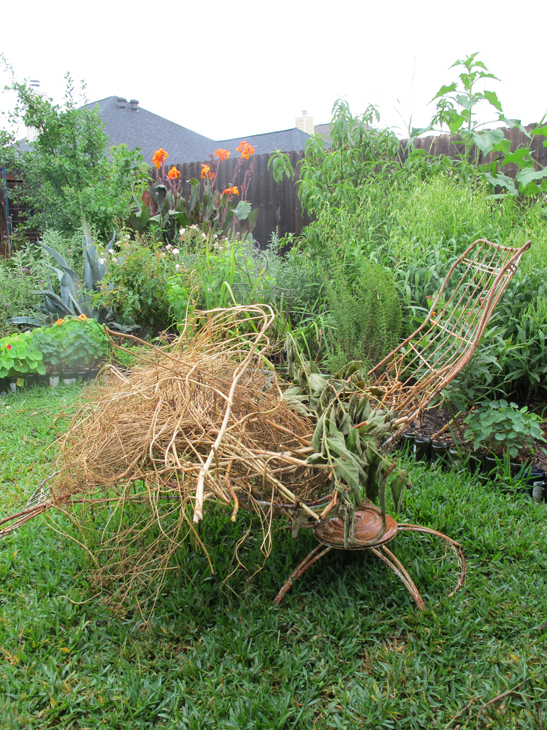


i’ve limbed up the sunflower’s leaves as they grow to support the tomatoes, tomatillos and peppers growing underneath them. the upper leaves should provide a bit of shade to get the veg through the heat of the day as well. the patch of sunflowers in front of the raised bed was a little experiment to see how big they’d get under competition from bermuda and st. augustine grass. they doubled in height after the last rain.
did i mention we’ve been visited by critters lately? here’s a few of the highlights.

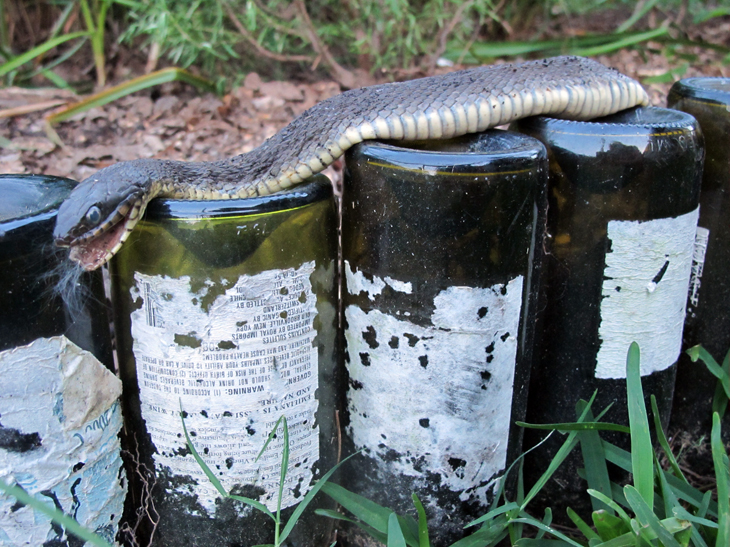
scare ya? ha! only a gardener would pull a (confirmed dead) snake out of sedges to see just how long it was – 10 wine bottle width’s worth. i wonder how many more might be sneaking around.
now, onto the critters for more gentle souls…
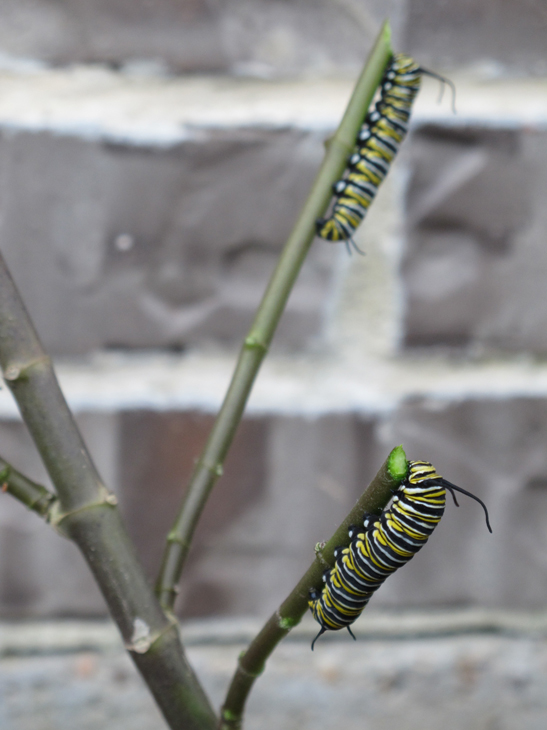

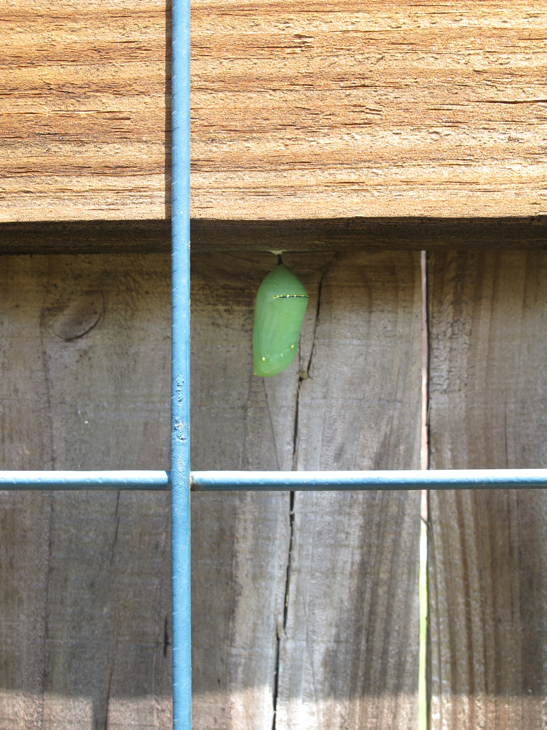
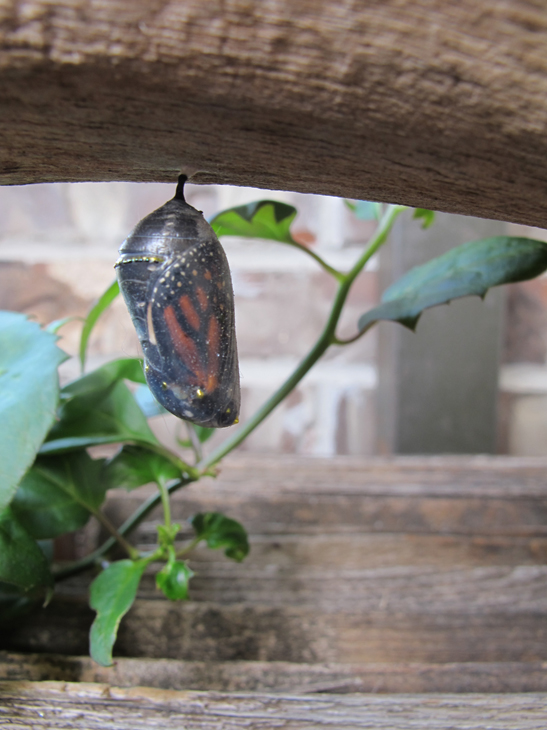


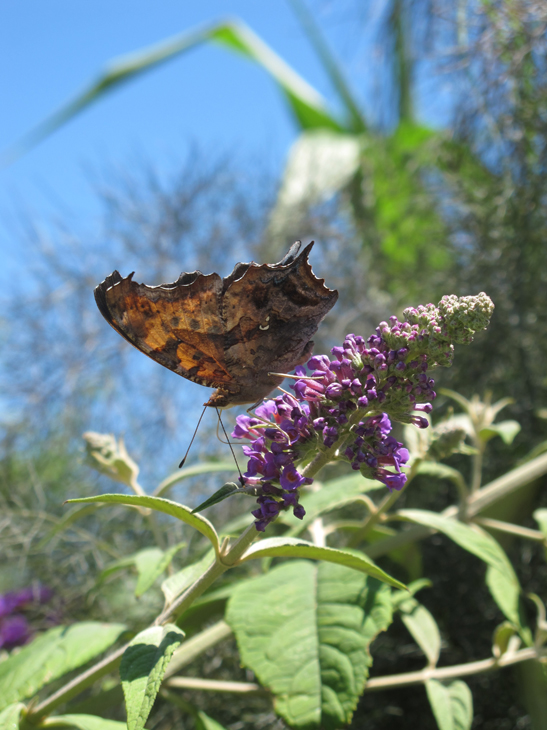
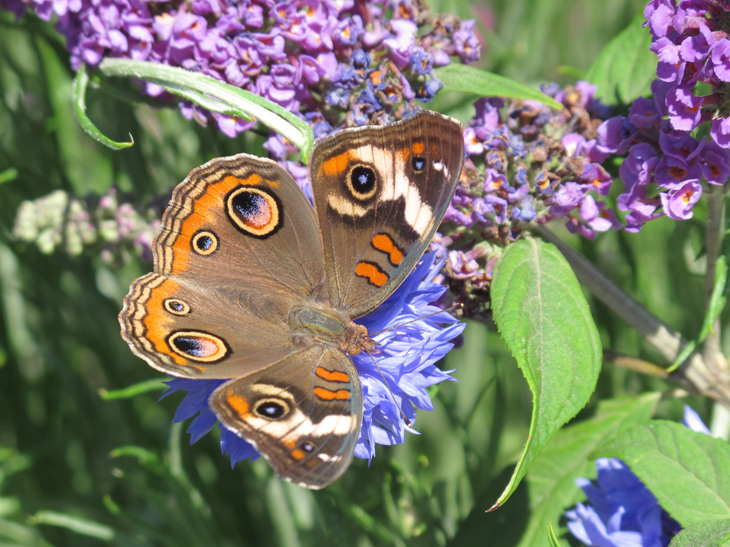
on the domestic critter front, the kitties have been, well, kitties. i’ve been playing nurse to puma for the past several weeks as she got into an altercation requiring surgery. while healing from that (with plastic cone collar on, of course) she went downhill fast due to another mysterious reason (stroke? aneurysm? tumor?), to the point we thought we were going to lose her. it’s a looong story, but she’s doing fine now and we’re so glad she’s still with us! dude and max did their best to avoid her, lest they catch what she had.
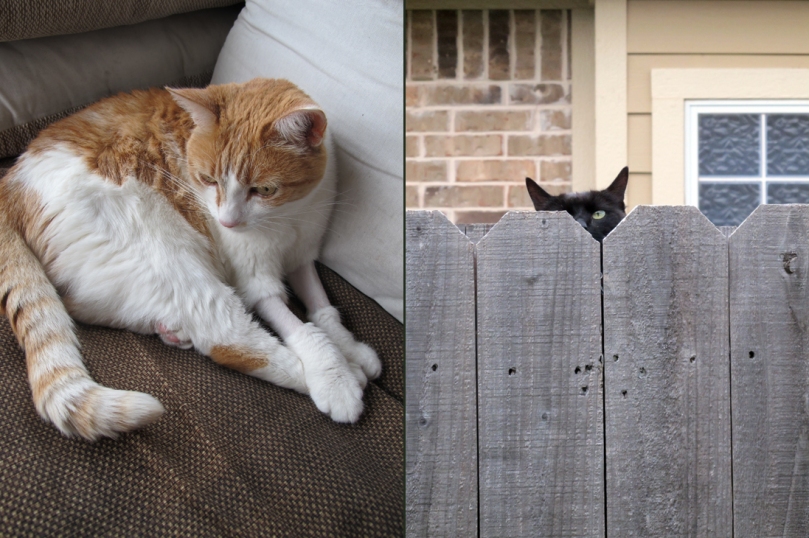
how’s that for an update? i could go on, but i’ve got some things to tend to before taking off for asheville. looking forward to catching up with the garden blogging community while there; and for those of you not going, oh how i wish you were! i probably won’t blog from there, but check out my twitter/instagram feed for pictorial updates enroute.
ttfn.






























































